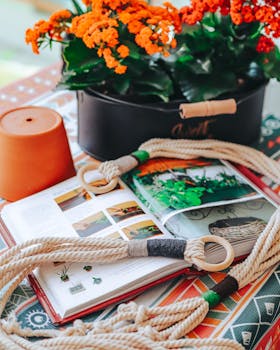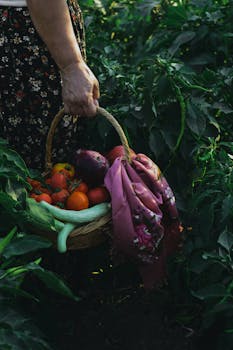Gardening is a rewarding hobby that not only beautifies your surroundings but also provides fresh produce and a sense of accomplishment. However, starting a garden can seem daunting, especially when you’re working with a tight budget or limited space. The good news is that creating a garden doesn’t have to be expensive or complex. With a bit of creativity and planning, you can establish a thriving garden, even in small or unconventional spaces. Here’s a comprehensive guide to help you get started.

1. Plan Your Garden
Before you begin, it’s crucial to have a clear plan. Ask yourself these questions:
- What do I want to grow? (Flowers, herbs, vegetables, or a mix?)
- How much space do I have?
- How much sunlight does my space receive daily?
If you’re working with a small space, such as a balcony, windowsill, or tiny yard, focus on compact plants or vertical gardening techniques. Sketch out your garden layout, noting the positions of sunlight and shade. Proper planning will save you time, effort, and money in the long run.
2. Use What You Already Have
Starting a low-cost garden means repurposing items you already own. Look around your home for containers, tools, and materials that can serve a gardening purpose. For example:
- Old containers: Buckets, jars, plastic bottles, and old pots make excellent planters.
- Recycled materials: Use egg cartons to germinate seeds or coffee grounds as a natural fertilizer.
- DIY tools: Instead of buying new tools, improvise with kitchen utensils or old spoons for planting and weeding.
Repurposing household items not only saves money but also reduces waste.
3. Start Small with Simple Plants
When starting out, it’s best to choose plants that are easy to grow and maintain. For beginners, consider these options:
- Herbs: Basil, mint, cilantro, and parsley are excellent choices for small spaces and thrive in containers.
- Vegetables: Radishes, lettuce, spinach, and green onions are quick-growing and require minimal care.
- Flowers: Marigolds, petunias, and pansies add color and are low-maintenance.
Starting small will help you build confidence as a gardener without feeling overwhelmed.
4. Create a Budget-Friendly Soil Mix
Healthy soil is the foundation of a thriving garden. If purchasing soil feels expensive, try these cost-effective methods:
- Mix soil from your yard with compost for added nutrients.
- Create your own compost by using kitchen scraps like fruit peels, coffee grounds, and eggshells.
- Use fallen leaves or grass clippings to improve the soil’s texture and retain moisture.
Avoid buying expensive fertilizers initially—natural, homemade alternatives often work just as well.
5. Master Vertical Gardening for Small Spaces
If you lack horizontal space, think vertically! Vertical gardening is an efficient way to maximize a small area while creating a visually stunning display. Here’s how:
- Install shelves or racks on walls or fences to hold pots.
- Use hanging planters for trailing plants like ivy or strawberries.
- Repurpose old ladders or pallets as tiered plant stands.
This technique not only saves space but also adds depth and dimension to your garden.
6. Grow from Seeds or Cuttings
Buying mature plants can be expensive. Instead, opt for seeds or cuttings, which are more affordable and allow you to grow a variety of plants. Some tips:
- Purchase seeds in bulk or swap seeds with friends and neighbors.
- Take cuttings from existing plants and propagate them in water or soil.
- Save seeds from fruits and vegetables you already eat, such as tomatoes, peppers, or cucumbers.
Growing from scratch is cost-effective and gives you the joy of nurturing plants from the very beginning.
7. Optimize Water Usage
Efficient watering can save you money and benefit your plants. Here are some ideas:
- Collect rainwater in buckets or barrels to use for irrigation.
- Water your garden in the early morning or late evening to reduce evaporation.
- Use mulch (e.g., dried leaves or straw) to retain soil moisture and reduce the need for frequent watering.
With these practices, you’ll conserve water while keeping your garden healthy.
8. Incorporate Companion Planting
Companion planting involves growing different plants together to benefit one another. This method can save space, deter pests, and improve yields. Examples include:
- Planting marigolds near vegetables to repel pests.
- Growing basil alongside tomatoes to enhance their flavor.
- Pairing beans with corn to create natural support structures.
This technique not only reduces the need for chemical pesticides but also makes your garden more efficient.
9. Utilize Community Resources
Many communities offer resources that can help you start a garden without breaking the bank:
- Seed libraries: Borrow seeds from local libraries or gardening clubs.
- Composting programs: Some municipalities provide free compost to residents.
- Gardening workshops: Attend free or low-cost classes to learn tips and tricks.
Joining gardening groups or online forums can also connect you with fellow gardeners who are eager to share advice and resources.
10. Don’t Be Afraid to Experiment
Gardening is as much about learning as it is about growing. Don’t be discouraged if some plants don’t thrive initially. Experiment with different plants, layouts, and techniques to discover what works best for your space and climate. Keep a gardening journal to track your successes and challenges, which will help you improve over time.
Conclusion
Starting a low-cost garden is entirely possible, even with limited space. By planning carefully, using available resources, and embracing creativity, you can create a flourishing garden that brings joy and greenery into your life. Remember, gardening isn’t just about the results—it’s about the process. So, roll up your sleeves, dig in, and watch your garden—and your enthusiasm—grow!



